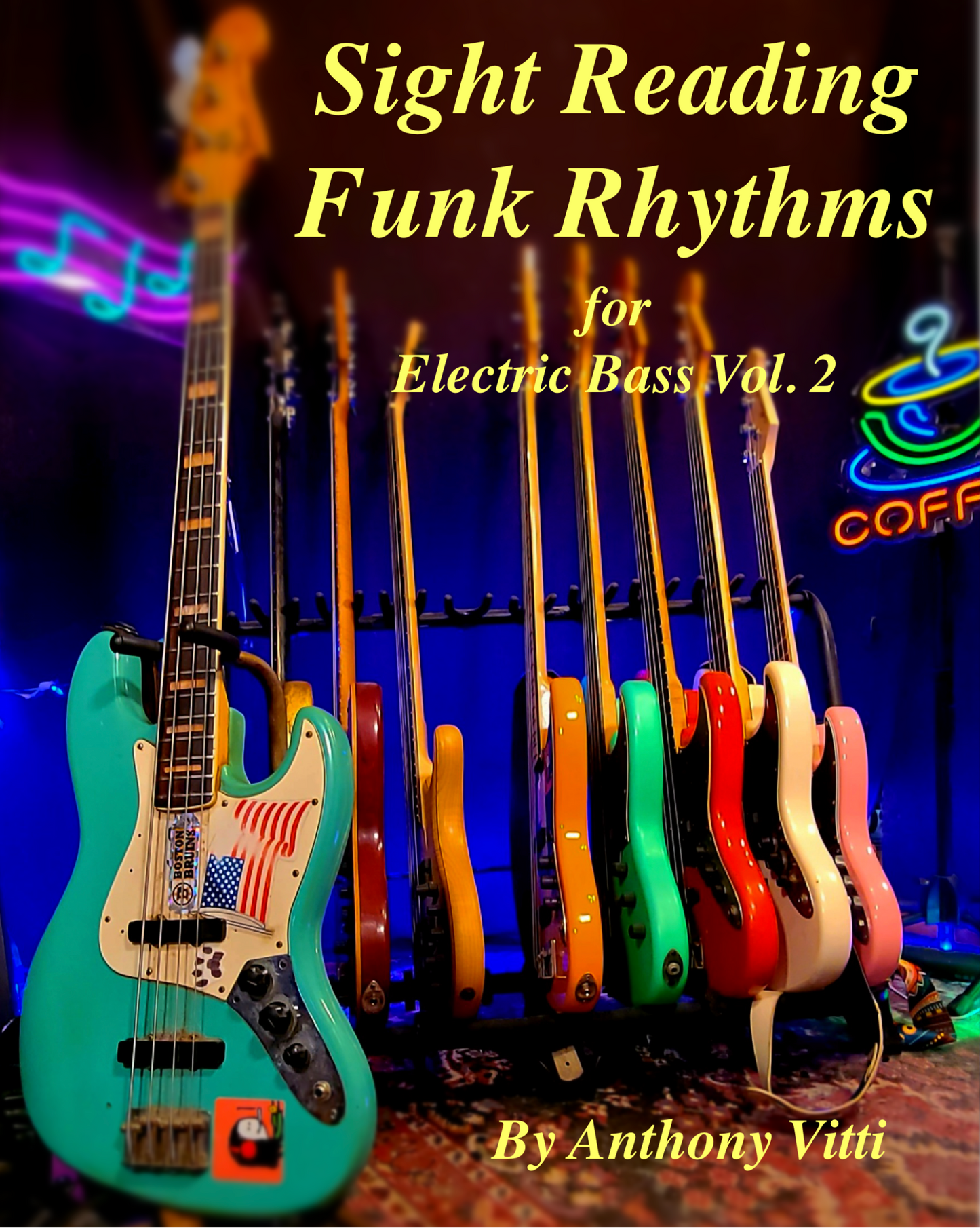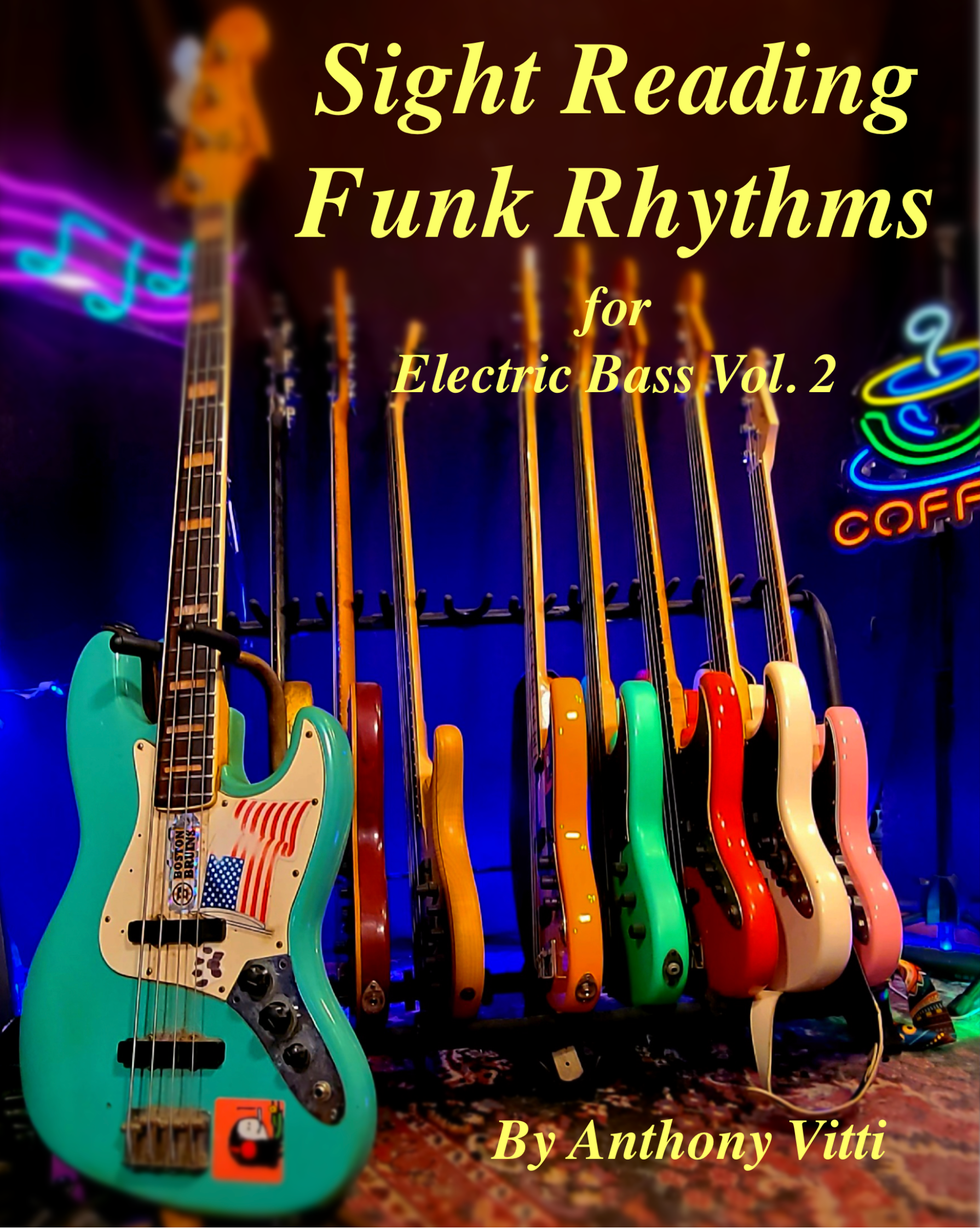Sight Reading Funk Rhythms - Vol. 2
Sight Reading Funk Rhythms - Vol. 2
Couldn't load pickup availability
The purpose of this book is to provide the advanced player difficult and challenging sight reading material. With that in mind, I really tried to make the first page of each example very approachable for any player. You will notice how the bass lines progress rhythmically and melodically on each page. You can practice the first page, and when you get that down, you can move to the second and third pages for a harder challenge. This works well because you are already familiar with the time, feel and positioning. The bass lines progress as you may improvise on a song. This is not a reading “method” book, as there are plenty of good method books already available. I think there is a shortage of “real world” challenging materials written for electric bass. These are the types of lines you could be asked to read on a session or gig. This is a good addition to my other books and it fills a unique and different place.
The examples are written in song form and not as exercises. You will hear “A” and “B” sections. I have provided backing tracks. The tracks are the length of one page in each example. Every page was written to the same backing track and you can see and read the development of the bass lines. I feel that this is more realistic with what you might find yourself playing in a session or on a gig. You will notice that I provided the chord changes at the back of the book. This is because I find that players tend to look at the changes (cheat) to get themselves oriented on the fingerboard. Without the changes, you have to read the notes. I would advise you NOT to write the changes over the bass lines.
I play 4-string basses, but I did write some stuff for 5-string basses. 4-string players can transpose the low phrases up an octave. You will hear me do that on some of the videos I posted on You Tube. If the tempos are too fast at first, I would suggest you play with a click and build up the tempos. You could also bring the tracks into a program where you can slow them down a bit.
If you are a beginner or intermediate reader, try taking four or eight measures at a time. Loop them and really get them down well. You will get much more out of that than if you try to play through a whole example and make mistakes. Try clapping the rhythms out before you try to play them. Remember that if you can't clap the rhythms, there is no way that you will be able to play them, let alone put the notes to them. Watch out for the key signatures! I purposely wrote things in keys that you don't see that much. Always practice using a metronome or a simple pattern in a drum machine. The less hand holding the better. You should always be working on
your time. I prefer a click on 2 & 4 or every few measures. Keep in mind that you are only truly "sight reading" the first time you see a piece of music. After that, you are practicing.
I hope you enjoy this book and I hope you find it challenging and useful. If you have any suggestions, feel free to write me you can send e-mail to: “daadoomusic@gmail.com”
You can see me play through all the examples on my You Tube page “@jbass69”. There is a Playlist specifically for this book.
Anthony Vitti
Share


